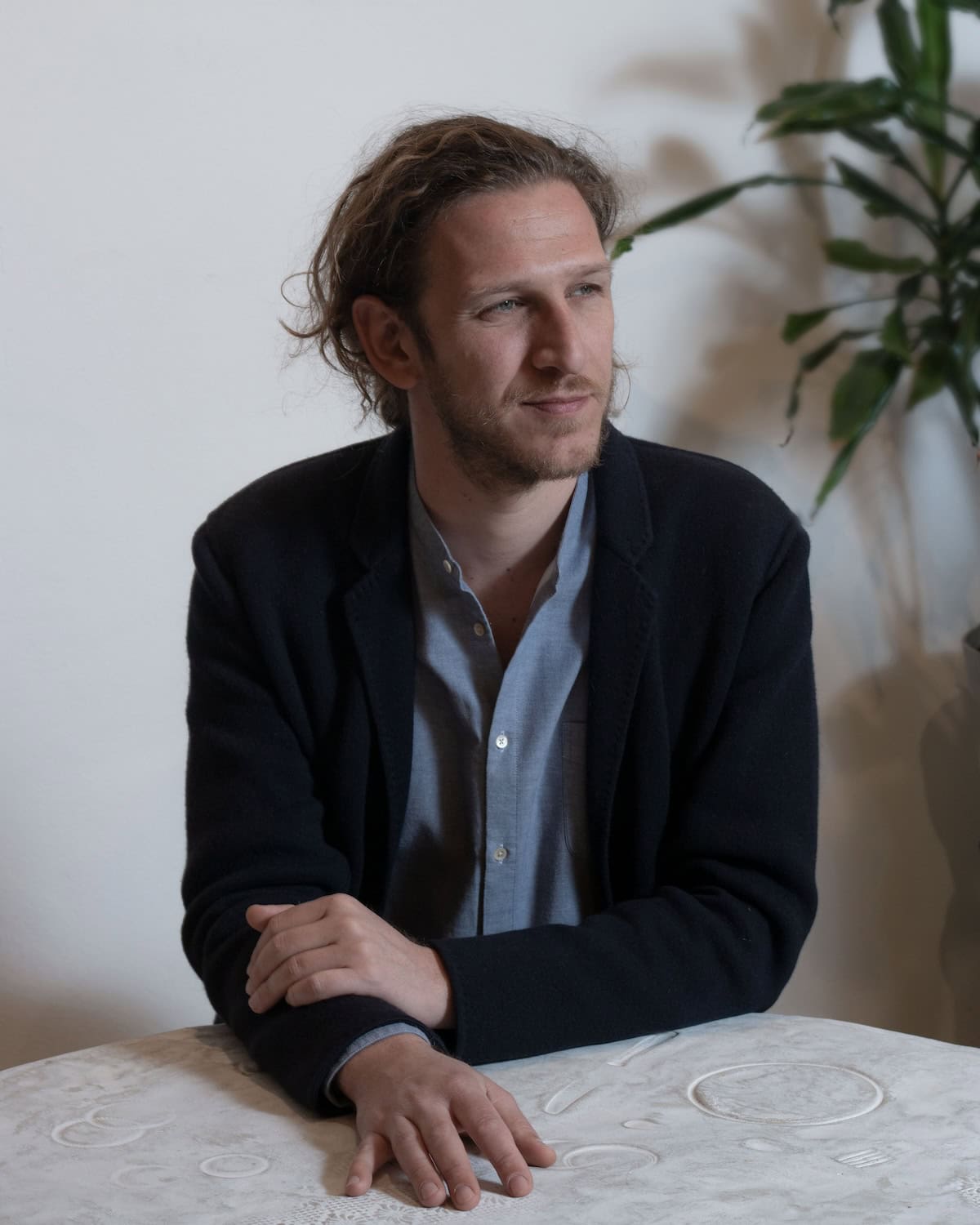During Fuorisalone 2024, Nilufar Depot hosts Andrea Mancuso’s Pentimenti solo show. The project takes its name from the preparatory sketches that are made in the search for the perfect form. These sketches are imperfect by nature and this is what makes them unique. The designer himself defines them as divine representations with almost dirty and very gestural strokes. The exhibition is divided into three parts: Stria, Sgraffito, and Strata. Stria opens the stage and consists of a dining table characterised by the irregularity of the brush strokes, which create a harmonious movement of lines of different colors. Sgraffito follows proposing a dining table and a consolle. It is made by engraving on marble, echoing an ancient technique of the representations and inscriptions on monuments and tables that were used in the past. The engraving on the marble is then completely covered with ink and once deposited in the cracks of the excavated part it is absorbed. What makes Sgraffito unique are the engravings themselves which leave the audience free to interpret the works and its features. Finally, the third part consists of Strata, an overlay of forms. The designer, in fact, played with marble to give an effect of transparency and abstract design that slowly brings out details. All objects are made from steel of different thicknesses and heights of industrial float glass, placed side by side and after that baked on a concave shape that creates unexpected overlaps and spontaneous movements of the glass.
The lines that refer to the designer’s preparatory drawing are made of bronze (in a foundry) in which glass from Murano is then blown inside. This causes unexpected shapes to be created, a real contrast between a primal, instinctive drawing and a shape that is gradually created inside.
Giulia Cuzzolin: What kind of relationships do you like to observe between your creations and people?
Andrea Mancuso: I really like the free interpretation, I think it might bother a lot of people, but everyone calls and interprets things in their own way, like the table in Sgraffito, some people see fish some people see a meadow and even a fur coat, everyone sees different things and then associates nicknames with them.”
GC: How would you personally define your relationship with the everyday?
AM: I really like to be surprised and to be kidnapped by curiosity, so I definitely create a direct relationship with the every day, both of interest and of research, just to create deformations or associations that somehow manage to create small fractures in an every day that we know and that opens up coves to question it.
GC: What is your relationship with the everyday objects that surround you? How much do you think society takes them for granted?
AM: On objects we become almost animistic, we start to give them a soul even though there are objects that have no value every day, that are white on white and fall flat. We have the capacity to lunge at objects, in fact, I have always been fascinated by animism as the first form of religion, even before deities there was animism, the tree becomes the deity and this association of soul to objects is fundamental; For me, every creation of mine is a piece of my soul”
GC: How important for a designer is design time and therefore the time spent on it?
AM: It is very important, absolutely! It is very important that this time is seen, so as in my case you see a table with thousands and thousands of engravings it happens that people ask me, “But how long did it take you?”, It is a question that I am asked often and I am very pleased with it because you can see the work behind it and it is a very big and personal labor. The personal time I dedicate I think is an added value, a lot of my life is dedicated only to my creations!
GC: What do you think about the design week in Milan?
AM: The Design Week in Milan is a great moment of experimentation, and yet definitely the most important event there is in the world for design for its openness to new designers and experimentation.
GC: Having participated in a variety of design events around the world, what do you think differentiates Milan Design Week from the rest of the world?
AM: Milan Design Week is definitely an event where you get a more comprehensive view. There are so many other fairs and opportunities to discuss design and see so many interesting innovations, Milan, however, has a greater concentration of all these elements. There are great experiments that together create a clear picture of what is happening in the design world now.









